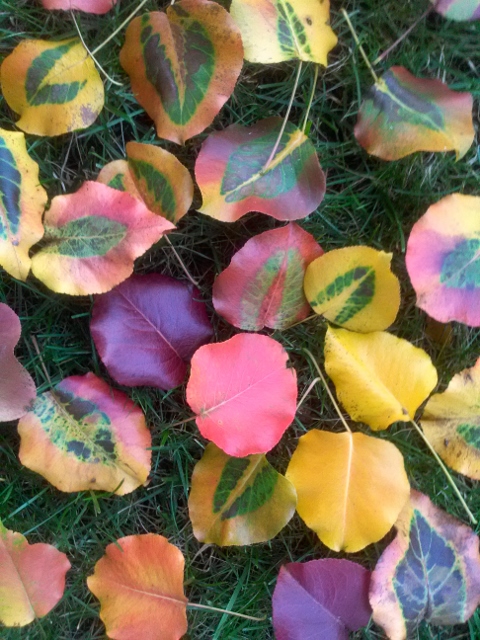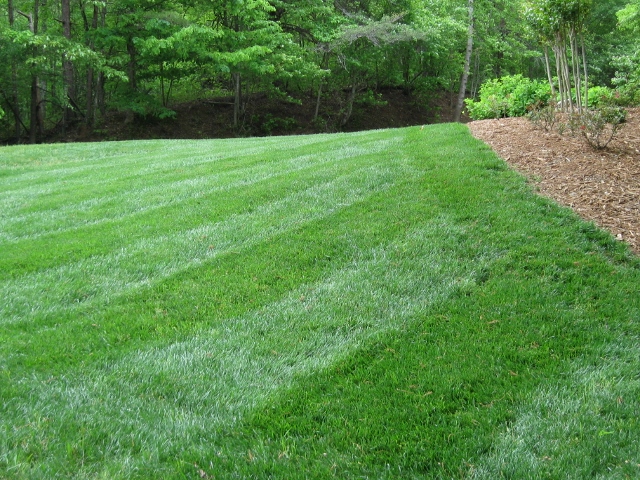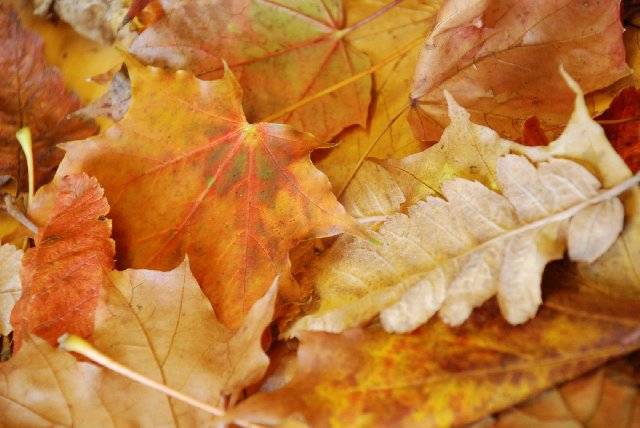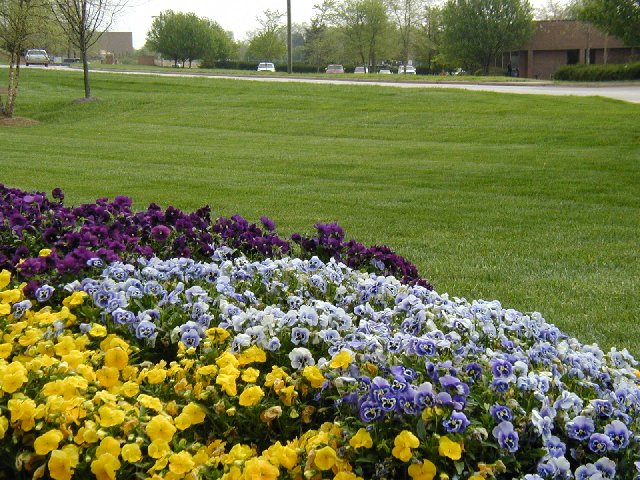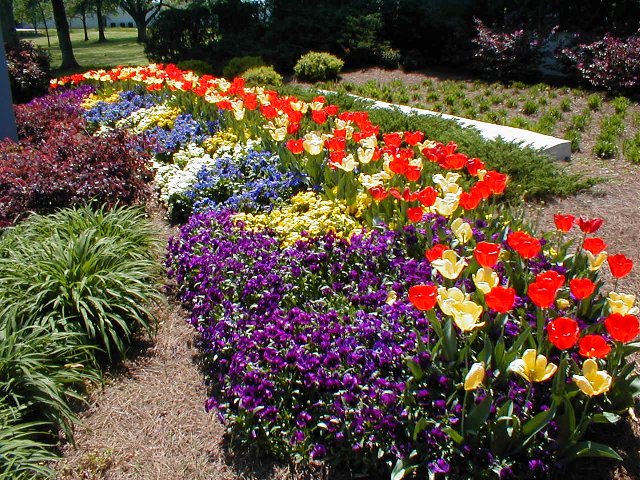|
|
FlowersWinter Landscaping & Lawn Care in the South
Along with fall and winter seasons come leaf fall. LMC becomes extremely busy during late fall and early winter with blowing and collecting leaves for our clients. Leaves are collected from lawns, planting beds, and paved areas every visit during the leaf season and placed at the curbside for pick up by the City of Gainesville Solid Waste Division or we dispose of the leaves on the client’s composting/dump area. Any leaves which must be removed from site will be transported to LMC’s composting facility. Mulching: After leaf fall and the collection and disposal of leaves, LMC becomes extremely busy with applying mulch to planting beds and natural areas during the winter months. Pine straw mulch or various types of bark mulches are applied as needed. Mulch is not only utilized for aesthetics, it also benefits plant growth by retaining soil moisture, moderating changes in soil temperature, and weed suppression. Pruning: Once ‘leaf season’ is over there are many pruning tasks that must take place while or before the mulching is going on. Some of these pruning tasks that take place in mid to late winter are: Pruning trees such as raising tree canopies for mower clearance and safety; pruning crape myrtles as necessary – (LMC’s policy - we do not severe prune crape myrtles unless necessary or if they need to fit a specific space.); cutting back groundcovers such as liriope and cleaning up daylilies and spent perennials; severe pruning (‘cutting back hard’) those receptive plants to re-establish plant boundaries; pruning ornamental grasses that are so numerous in the southern landscape; and pruning landscape plants such as certain hydrangeas, roses and butterfly bushes. Seasonal Color Care: We are fortunate to have a climate that allows the installation of certain annuals that remain hardy through our winter months and then provide a beautiful spring flush of color. Installation of winter hardy annuals such as pansies, violas, snapdragons and ornamental cabbages and kales takes place in October. Inspections and care of color plantings such as applying fertilizers to encourage flower production, weed control, identification of diseases and insects, and removal of spent blooms continues throughout the winter months. Landscaping (Tree Installation) In general, LMC encourages landscaping, especially most deciduous tree installations to be done during the late fall/winter months in our area when the rate of water loss from planted trees and shrubs is much less than if installed in the spring and summer months. A fall/winter installation in our area gives the plants time to become established before the summer’s heat, humidity and water stresses set in. Landscape Management Company provides landscaping and lawn maintenance services to clients throughout North Georgia. Contact us today for more information on winter landscaping and lawn care. Posted: December 5th, 2014 | Permalink Fall Lawn Care in the SouthTurf Care (Mowing) In the fall, it’s important to know what type of grass you have and how it will react to the cooling temperatures. Proper turf care depends on whether you have cool or warm season grass. Fescue, the South’s cool season grass, thrives in the fall, just as it does in the spring. This turf will enjoy vibrant and healthy months in the fall, but will require more mowing and maintenance. Our warm season bermuda/zoysia grasses, on the other hand, grow best in the summer months. As summer fades into fall, these grasses becomes sparse and brown, requiring little mowing, but losing their lush summer vitality. Core Aeration and Over-seeding of Fescue Lawns Fall is the ideal time for getting your fescue lawn aerated and over-seeded. Aeration loosens up the compacted soil and allows the grass to absorb more oxygen, water and nutrients. Grass germinates and roots itself more effectively in an aerated lawn, which you can take advantage of by having your lawn over-seeded along with soil aeration. The germination of fescue grass is most effective in the fall. Once your lawn has been aerated and over-seeded, the grass will have the winter and spring to flourish and develop strong roots which will help it survive our harsh southern summers. Leaf Blowing The fallen leaves that scatter our lawns and driveways are a yearly reminder of fall’s namesake. When the blankets of leaves start to form in late fall, be sure to have dead leaves blown and collected to keep lawns and pavement clear. Place bagged leaves at the curbside for pickup, or drop them off at a composting/dump area. Hardy Fall Annuals There are a number of resilient, colorful annuals that can survive the South’s fall weather. If you are looking for a beautiful splash of color in the fall, consider installation of pansies, violas, snapdragons, ornamental cabbages and kales. Tree Installation Because late fall is when the rate of water loss from planted trees and shrubs is at a minimum, this is the best season for the installation of most trees — deciduous in particular. If planted in the spring or summer, however, trees and shrubs are more susceptible to water deprivation. Fire Ant Control Fire ants build shallow mounds in lawns and often remain undetected until a person gets unknowingly too close. They are active during the fall and can pose a serious hazard to individuals in the vicinity. Professional fire ant control is important to maintaining a healthy and safe lawn in fall months. Landscape Management Company are experts at providing comprehensive lawn care services for southern lawns in fall. To learn more about the services that Landscape Management Company offers in North Georgia, please contact us today! Posted: September 22nd, 2014 | Permalink Spring Lawn Care in the SouthAdditionally, the right planting and maintenance tasks will also vary depending on the season. Here, we will outline how to choose the right turf for the South and how to care for your lawn and plants during the spring season. Turf Choosing the right turf is very important to make sure that you have grass that will survive the temperature and climate during the summer months ahead. The southern area of the country is located within the “turf transition zone.” This means that the climate allows the use of both cool season (Fescue) and warm season (Bermuda/Zoysia) grasses. However, because weather conditions can fluctuate to extremes, all turf grasses are susceptible to environmental stresses. Fescue Fescue performs and looks its best in spring and fall. Fescue lawns will naturally thin as a result of summer heat and other environmental stress so expect to see this in the summertime. Bermuda and Zoysia Bermuda and Zoysia perform and look best in late spring through early fall. These grasses are completely dormant in the winter and lose all chlorophyll which results in the turf turning a light brown color. However, they fare very well during the harsh summer months making them a good pick for southern landscapes. Spring Turf Care When it comes to spring turf care, it’s important that all winter landscape tasks are finished before the spring. Be sure to make sure that you take into consideration what tasks need to be done during the fall and winter to prepare for spring. Let’s talk about what maintenance jobs actually need to be completed during the spring season. Here are several tasks that will need to be completed. Mowing Fescue performs and grows well in the spring and should be mowed weekly at a three to four inch mowing height. This height encourages a deep root system which helps to strengthen grass. In mid to late April, you will generally start to see the warm season grasses, Bermuda and Zoysia, begin to change back from brown to green as they transition out of their winter, dormant season. This is called “greening up.” These warm season lawns should be mowed weekly and at a one to two inch mowing height during late spring and summer. Scalping Scalping is a mowing process that is done primarily on Bermuda lawns in early to mid-spring or just before the Bermuda grass starts to green up. It involves the removal of excess, dead turf leaf matter to promote grass greening up sooner by allowing sunlight to warm the soil surface. Scalping also helps to prevent thatch and is done after all chance of frost is past. Core Aeration Another spring maintenance task on warm season turf is core aeration. Aeration is performed by coring type aerators that penetrate the soil surface and remove and redeposit small columns of soil. Aeration reduces soil compaction (caused by foot traffic, mowers, etc.); improves the soil’s ability to accept oxygen, water and nutrients provided by fertilizer; enhances decomposition of grass clippings and thatch that accumulate at the soil surface. Fertilization and weed control In early spring, it’s important to apply a slow release fertilizer to fescue turf. The same should be done to warm season grasses (Bermuda and Zoysia) in late spring. All turf grasses should be treated with a weed controller in the spring as well. Landscape Service Needs All the previously mentioned landscape maintenance tasks are specific to turf care. The following are some plant maintenance tasks that should be completed during spring. Disease and Insects You should always make it a point to inspect plants for disease or insect problems such as fire ants. Check the color and condition of the leaves and the soil surrounding the plant to make sure you don’t spot any irregularities in color or any insects. Spring and Summer Flowers Mid April is the perfect time in the South to add some spring color to your lawn with spring and summer flowers. Plan your selection carefully around the most summer hardy flowers. These will perform the best and endure the drought, heat and humidity stresses of southern summers. Trees and Shrubs Early spring is a good time for installing landscape plants such as trees, shrubs and perennials. However, there needs to be sufficient watering to get these plants through the dry summer months. It's also important to to prune and maintain the plants you install. Some trees may do better installed in the fall or winter so be sure to research the type of tree you are wanting to plant to see when is the best planting season. To learn more about the services that Landscape Management Company in offers in North Georgia, please contact us today! Posted: March 20th, 2014 | Permalink Flowers for Fall Planting in the SouthThese cold-weather-friendly annuals are easy to find at local garden centers and nurseries. Pansies Pansies should be planted in October in the South. These flowers produce beautiful flowers and come in come in every color under the sun. The benefit to these annuals is that you don’t have to do much with pansies other than make sure they get enough sun (full to partial sunlight) and water (keep the soil moist but well-drained). Another great thing about pansies is how resilient they are to the cold and frost. These beautiful annuals will bloom through the winter and put on a fantastic color show in the spring! Violas Violas are simply pansies but with a greater number of flowers that are much smaller than pansy blooms. Like pansies, violas should be planted in October in the South and prefer full sunlight and moist soil. They have two main color patterns – blotched (with a ‘face’) and clear (without a face.) Blotched and clear violas come in all colors such as purples, blues, lavender, reds, orange, yellow, white and combinations of colors. Snapdragons Snapdragons are perennials that are typically planted in October in the South because they do not like the hot temperatures of the southern summers. These flowers are fairly low maintenance but prefer full sun and moist, well-drained soils. Snapdragons range in height from one to four feet and colors vary from yellow, red, cherry, lavender, crimson, rose-pink and white. Ornamental Cabbages and Kales The leaves of these plants look like the edible kales and cabbages that we eat. These beautiful plants grow in many colors such as pink, rose, red and white foliage colors. These produce a yellow flower in the spring but are mostly known for the bold leaf color that they maintain during the winter months. Kales and cabbages require full sun and moist soil and should be planted in October. Although most people tend to do the majority of their gardening in the spring and summer, you can still have fun with the colder seasons and extend the beauty of your garden. You just have to know what to plant and where to plant them. If you have any questions about planting flowers or would like to learn more about fall lawn care and services, please contact Landscape Management Company today! Posted: October 18th, 2013 | Permalink Landscaping Mistakes to AvoidOverwatering. Overwatering your plants can encourage the growth of weeds and make healthy plants more susceptible to potentially deadly diseases. To avoid this problem, pay attention to the amount of water you put on each plant, and keep an eye out for runoff, as it is a sign of too much water. Also, avoid watering if there is raining in your area’s 24-hour forecast. Pruning too often. This practice, also known as overpruning, refers to the unnecessary trimming and clipping of plants. While some pruning is necessary for all plants, doing so too often can weaken the plant, leaving it more susceptible to snapping, insects and disease. Also, overpruning can prevent future buds from developing. To prevent this, never remove more than 30 percent of the leaves and branches for a plant or shrub at a time. Using too many pesticides. It’s easy to become convinced that every bug you see in your garden is trying to harm your plants. However, the truth is, insects such as ladybugs actually protect your plants. Try to avoid dousing your garden in pesticides and use small amounts in localized areas. Knowing and understanding the biggest potential mistakes you can make when managing your landscaping is one thing. Actually working to avoid them can be another. If you find yourself having trouble maintaining your flower beds or struggling through any other landscaping frustrations, let Landscape Management help. Our team of experienced landscapers can answer any questions you may have and work with you to keep your home landscaping pristine. Landscape Management Company is commited to serving your business. Be sure to check out our commercial landscaping page for more information about our services and some of our specialty areas. To speak directly to one of our team members, contact us today. Posted: March 29th, 2013 | Permalink How to Add Color to Your LandscapeAs spring approaches, the grass gets a little greener every day, daffodils start to push themselves to the surface, and people begin to think about how they can join the celebration by adding color to their own landscapes. Everyone likes to step outside this time of year and see color blooming in full force, and with a few purchases your yard can join in the fun. Plan One of the most overlooked and under appreciated elements of your landscape is a landscaping plan. Before you go out to the local nursery and start buying plants that make you "ooh" and "ahh", make sure that you know exactly where they will be going in your yard. It is easy to get excited and start filling up your car with plants that you have no idea what to do with when you get home, or that aren't suited for your landscape. It is wasted time and money and can be avoided with a little pre-planning. Flowers One of the simplest and most obvious ways to add color to your landscape is to head to the flower department. Annuals give you the opportunity to have a brand new garden every year and are a great place to start. Popular choices include begonias, snapdragons, geraniums, and inpatients. You can plant these in small areas with plants of all the same color or in bigger planting areas, choosing several different colors to spice it up. It is important to remember that annuals differ in the amount of sunlight and water that they need. Be sure to read the identification that comes with the flower and find a spot in your yard that will work for its growing habits. Trees Another idea to add color to your yard is to add small trees. Small trees not only add shade, but can color at different times during the year, always leaving your landscape with something to show off. Popular choices include crepe myrtles, cherry trees, Japanese dogwood, and magnolia trees. Remember that these are trees, not flowers or shrubs and they are going to grow as such. Leaving enough space for a tree to mature is a choice you will enjoy ten years down the road. Portable Don't forget about hanging baskets, window boxes and flower pots as a quick and easy way to add color to your landscape. Make sure you have potting soil and a container big enough and you can add color in a matter of minutes, dramatically changing the look of your landscape. With a few of these changes done on a weekend, your landscape will be ready to usher in spring in full force this year. For more information on our landscaping services or to speak with one of our landscape experts, contact us today! Posted: August 22nd, 2012 | Permalink |



 All services offered by Landscape Management continue year -round, even though specific landscape tasks change as the seasons change. A LMC maintenance crew is scheduled to visit a client for service and inspections a minimum of every six to ten days.
All services offered by Landscape Management continue year -round, even though specific landscape tasks change as the seasons change. A LMC maintenance crew is scheduled to visit a client for service and inspections a minimum of every six to ten days.